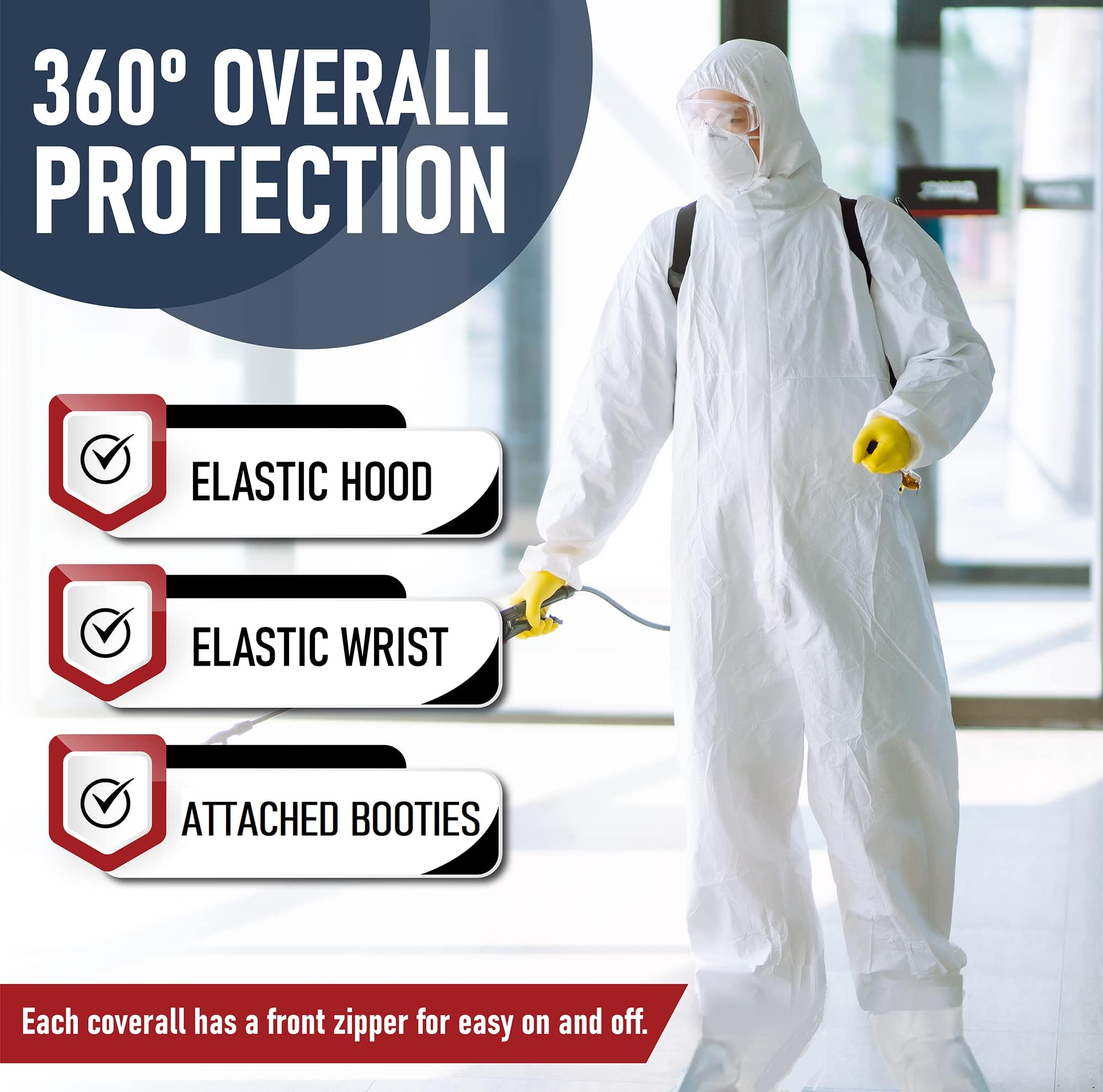Protective Coveralls: Your Ultimate Guide to International Standards and Suit Selection
Introduction

Protective coveralls play a vital role in safeguarding workers and professionals across various industries. These versatile garments shield wearers from hazardous substances, liquids, and particles, ensuring a safe working environment. In this comprehensive guide, we will explore the international standards that govern protective coveralls, examine the differences between TYPE5 and TYPE6 protective suits, and analyze the suitability of different types of protective coveralls for various scenarios.
1. International Standards for Protective Coveralls
Protective coveralls are subject to stringent international standards to ensure their effectiveness and safety. Some of the most commonly recognized standards include:
a) EN 14126: This standard focuses on the performance of protective coveralls against infectious agents, such as bacteria and viruses. It evaluates the ability of the fabric and seams to prevent the penetration of hazardous biological substances.
b) EN 14605: Coveralls compliant with EN 14605 are designed to protect against liquid chemicals. They are tested for their resistance to liquid splashes and sprays.
c) EN ISO 13982-1: Often referred to as TYPE5 coveralls, these garments provide protection against hazardous dust and dry particles, commonly found in industries like asbestos removal and pharmaceutical manufacturing.
d) EN ISO 13034: Known as TYPE6 coveralls, these suits offer limited protection against liquid splashes and sprays. They are suitable for environments where the risk of chemical exposure is relatively low.
2. The Distinction between TYPE5 and TYPE6 Protective Coveralls
a) Original Materials: TYPE5 coveralls are typically made from non-woven materials, such as polypropylene. These materials are lightweight and breathable, making them suitable for extended use. On the other hand, TYPE6 coveralls are crafted from microporous laminates or film-coated non-woven fabrics, which offer a higher level of liquid repellency.
b) Liquid Barrier Performance: TYPE5 coveralls are primarily designed to protect against hazardous dry particles and dust but offer limited protection against liquid chemicals. In contrast, TYPE6 coveralls are more effective in repelling liquids, making them suitable for environments with low chemical exposure risk.
c) Gram Weight: TYPE5 coveralls usually have a higher gram weight per square meter, ranging from 50 to 70 gsm (grams per square meter). Conversely, TYPE6 coveralls have a lower gram weight, typically around 40 to 65 gsm. This difference contributes to the disparity in their overall protective capabilities.
3. Analysis of Different Types of Protective Coveralls for Different Scenarios
a) Breathable Membrane Coveralls: These coveralls are designed for tasks requiring prolonged wear in hot and humid conditions. Industries like agriculture, cleanrooms, and construction benefit from their excellent breathability and comfort.
b) Non-Woven Fabric Coveralls: Ideal for environments with minimal liquid exposure, non-woven fabric coveralls are commonly used in pharmaceutical laboratories, food processing units, and general maintenance tasks.
c) Plastic Coveralls: Plastic coveralls provide exceptional liquid resistance and are commonly utilized in chemical handling, oil and gas industries, and hazardous material cleanups. However, they may not be as comfortable for extended wear due to reduced breathability.
Conclusion
Choosing the right protective coverall is essential for maintaining a safe and secure working environment. Understanding the international standards that govern these garments, along with the differences between TYPE5 and TYPE6 coveralls, empowers professionals to make informed decisions. By considering the specific demands of each work scenario, such as breathability, liquid resistance, and the level of potential hazards, employers can equip their workforce with the most appropriate protective coveralls, ensuring optimal protection and comfort for all.
 EN
EN
 AR
AR
 BG
BG
 HR
HR
 CS
CS
 DA
DA
 NL
NL
 FI
FI
 FR
FR
 DE
DE
 EL
EL
 HI
HI
 IT
IT
 JA
JA
 KO
KO
 NO
NO
 PL
PL
 PT
PT
 RO
RO
 RU
RU
 ES
ES
 SV
SV
 TL
TL
 IW
IW
 ID
ID
 LV
LV
 LT
LT
 SR
SR
 SK
SK
 VI
VI
 HU
HU
 TH
TH
 TR
TR
 FA
FA
 GA
GA
 CY
CY
 IS
IS
 LA
LA













